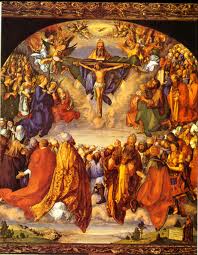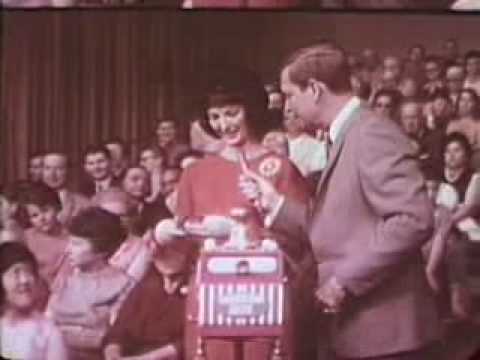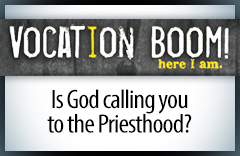When “the Word was Made Flesh,” Did God Change?
Yesterday, I received an excellent question. It is not exactly a common question, but I do get it about 5 or 6 times per year. Give or take a few. The question is: “If ‘the Word was made flesh,’ how can we say God did not change?” Actually, I do answer this question in my book, Behold Your Mother, in chapter two: Mary Matters: What Happens When the Theotokos is Rejected. Check it out!
But at any rate, I thought I would answer this question here. This is a very important question that deserves an answer.
The short answer to the question is “no!” God did not change in the incarnation. God cannot change (see Mal. 3:6)! But in order to understand this, we have to first define a very important term: the hypostatic union. At the incarnation 2,000 years ago, the second person of the Blessed Trinity acquired a human nature, i.e., the second person of the Blessed Trinity is said to possess two natures, one divine, and one human, subsisting within the one divine person. End of definition.
Please take note that there is no “mixing” of natures here. The divine and human natures of Christ are absolutely distinct. Yet, they are “joined” in the hypostatic union, i.e., a created union “within” the one divine person of Christ.
Here is the rub. What do we mean by this union existing “within” the one divine person? That seems to imply a change, right?
St. Thomas Aquinas explains:
Since the Divine Person is infinite, no addition can be made to it: Hence Cyril says [Council of Ephesus, Part I, ch. 26]: “We do not conceive the mode of conjunction to be according to addition”; just as in the union of man with God, nothing is added to God by the grace of adoption, but what is Divine is united to man; hence, not God but man is perfected. (St. Thomas Aquinas, The Summa Theologiae, Pt. III, Q. 3, Art. 1, Reply Obj. 1.)
When we speak of the hypostatic union of the divine and human natures of Christ in the one divine Person, we have to qualify what we mean by the union being “in the Person” of Christ. St. Thomas, in explaining that the hypostatic union is a “created union,” explains that in so much as it is a created union, it cannot be “in God” in the sense that there could be change in God.
… every relation which we consider between God and the creature is really in the creature, by whose change the relation is brought into being; whereas it is not really in God, but only in our way of thinking, since it does not arise from any change in God. And hence we must say that the union of which we are speaking is not really in God, except only in our way of thinking; but in the human nature, which is a creature… Therefore we must say it [the Hypostatic Union] is something created. (Ibid., Q. 2, Art. 7.)
When the Councils of Ephesus and Chalcedon speak of the hypostatic union being “in the Person of Christ,” it is so inasmuch as the human nature assumed by Christ now has as its subject the divine Person of Christ. But inasmuch as that union is a created union, it is not “in God.” That is why St. Thomas says it is “not really in God, except in our way of thinking.” The human nature has as its subject, the divine Person. Therefore, it is “in God,” in that qualified sense. But inasmuch as this involves change, it is not “in God” because God cannot change.
“But wait a minute,” someone might say. “The second person of the Blessed Trinity used to be God alone, but at the Incarnation he became a God/man mixture, right? You’re playing games here, right?”
Wrong.
Jesus Christ is not a “God/man mixture” within his divine person. That would be heresy. Again, there can be no change to a divine person. The orthodox Catholic position preserves the basic metaphysical principle that is rooted in reason and in Scripture I mentioned above: “For I the Lord do not change” (Mal. 3:6).
Another way to look at this is to understand that at the Incarnation, the second person of the Blessed Trinity added a human nature, but he (the divine person) did not change in his divine essence. The only real change took place in the human nature. The human nature of Christ received infinite dignity in and through the hypostatic union—hence, we can worship the man, Jesus Christ, but God did not change in the process. Neither did Christ’s human nature become a divine nature. But because of the hypostatic union, when one refers to the human nature of Christ, the subject is the divine person. This is why we can affirm that God, the second person of the Blessed Trinity, was born, suffered, died and was resurrected. Even though the divine nature cannot die, the divine person did, because of the hypostatic union. We say “he” died because whatever is attributed to each nature must ultimately be attributed to the subject—the unchangeable person of Christ. Thus, we also worship the whole Christ, not part of him. And thus, Mary gave birth to the whole Christ, not part of him.
This is a great mystery, and we should not shy away from admitting it. 1 Timothy 3:16 says, “Great is the mystery of godliness. He [God] was manifest in the flesh, seen of angels preached on unto the gentiles and received up into glory.” The truth of the hypostatic union is beyond our ability to comprehend fully, but there is nothing about it that is contrary to reason. Anyone who would allow for change in one of the three divine persons of the Blessed Trinity is stating a proposition that is clearly contrary to reason; it is irrational. And that is no mystery at all. The Council of Ephesus, affirmed by the Council of Chalcedon, says quite succinctly and accurately:
He did not cast aside what he was, but although he assumed flesh and blood, he remained what he was, God in nature and truth. We do not say that his flesh was turned into the nature of the godhead or that the unspeakable Word of God was changed into the nature of the flesh. For he (the Word) is unalterable and absolutely unchangeable and remains always the same as the scriptures say (Mal. 3:6).
Take note of the emphasis that the person of the eternal Word of God does not and cannot change. Even the heretical Nestorians did not make a mistake as obvious as to attempt to claim there was “change” in God. The Nestorians were at least clear that they were separating divine and human persons, which eliminates any chance of implying change in the divine person.
Ultimately, the errors in thinking among those who attempt to claim God can change are almost always rooted in a lack of understanding of the difference between “person” (who someone is) and “nature” (what someone is). The fact that the subject of the human nature of Christ is the divine person does not necessitate any change in that divine person. “The who” does not change. And, in fact, there is no change to the divine nature either. The only change we can speak about is the radical change to human nature that occurs by the grace of the hypostatic union where the human nature of Christ is lifted up, as it were, into the divine person, receiving infinite dignity as a result. Thus, “the man, Jesus Christ” (I Tim. 2:5) has not merely become a “[partaker] of the divine nature” (II Peter 1:4) as we Christians are. The “man” Jesus Christ is God because of the hypostatic union. Again, this is not because the human nature in Christ has become a divine nature. It hasn’t. It is so because of the fact that the subject of the human nature is the divine person.
Thus, whether one is referring to the human or divine natures in Christ, or, the “what” in Christ, the “who,” or the “he” is God.
And isn’t this exactly what we see in Sacred Scripture, folks? Just examine Col. 1:15-22 and you will see the “he” or person of Christ being referred to as both “the creator” of all things; thus, “he” is God (see verses 16-17 below), and as having suffered and died on the cross for our salvation (see verses 18-22).
He is the image of the invisible God, the first-born of all creation; [16] for in him all things were created, in heaven and on earth, visible and invisible, whether thrones or dominions or principalities or authorities — all things were created through him and for him. [17] He is before all things, and in him all things hold together. [18] He is the head of the body, the church; he is the beginning, the first-born from the dead, that in everything he might be pre-eminent. [19] For in him all the fulness of God was pleased to dwell, [20] and through him to reconcile to himself all things, whether on earth or in heaven, making peace by the blood of his cross. [21] And you, who once were estranged and hostile in mind, doing evil deeds, [22] he has now reconciled in his body of flesh by his death, in order to present you holy and blameless and irreproachable before him.
Thus, “he” is both God, the creator, and “he” died on the cross. Why? Because anything attributed to either nature must ultimately be attributed to the one, divine person.





